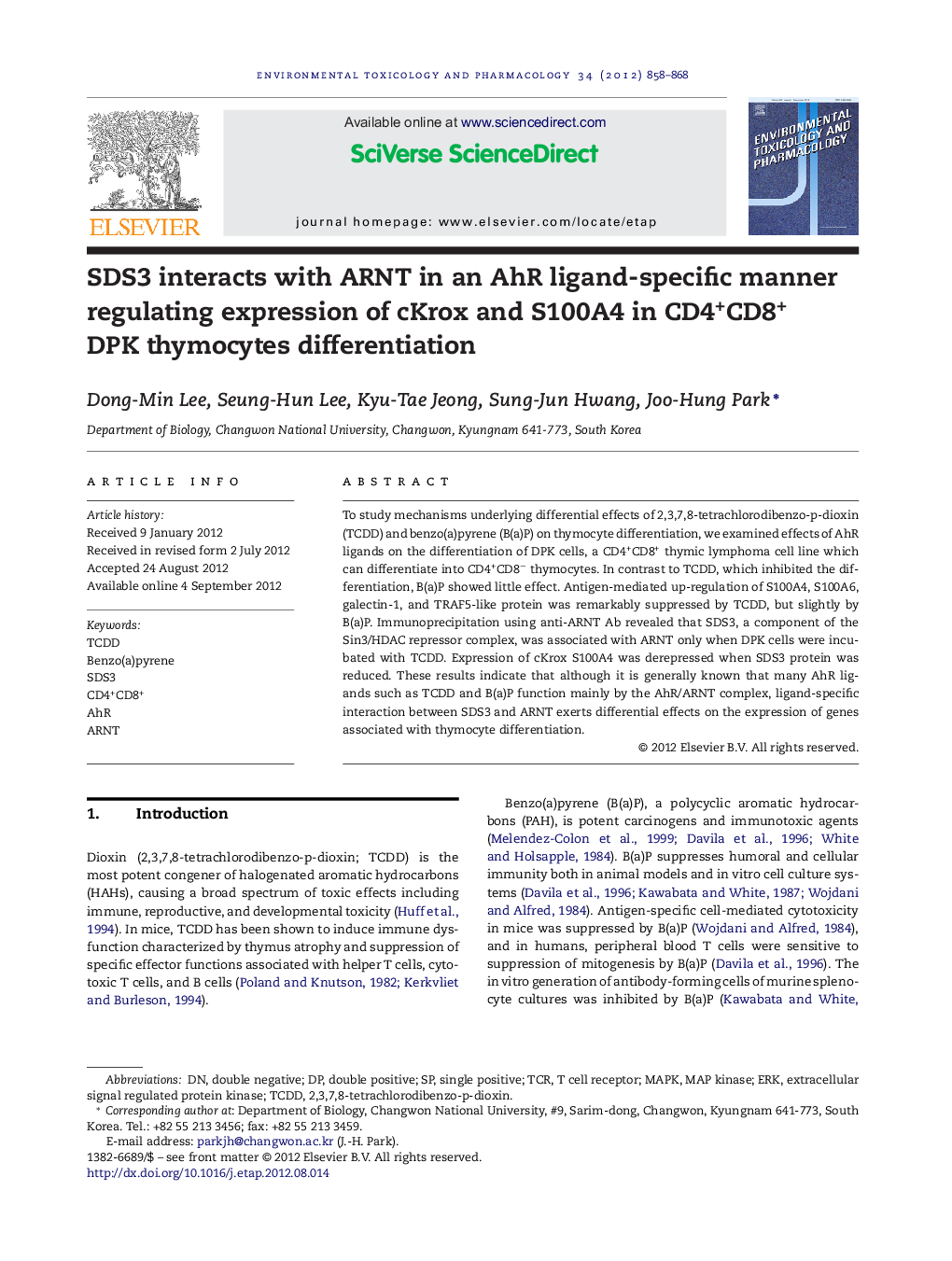| Article ID | Journal | Published Year | Pages | File Type |
|---|---|---|---|---|
| 5849047 | Environmental Toxicology and Pharmacology | 2012 | 11 Pages |
To study mechanisms underlying differential effects of 2,3,7,8-tetrachlorodibenzo-p-dioxin (TCDD) and benzo(a)pyrene (B(a)P) on thymocyte differentiation, we examined effects of AhR ligands on the differentiation of DPK cells, a CD4+CD8+ thymic lymphoma cell line which can differentiate into CD4+CD8â thymocytes. In contrast to TCDD, which inhibited the differentiation, B(a)P showed little effect. Antigen-mediated up-regulation of S100A4, S100A6, galectin-1, and TRAF5-like protein was remarkably suppressed by TCDD, but slightly by B(a)P. Immunoprecipitation using anti-ARNT Ab revealed that SDS3, a component of the Sin3/HDAC repressor complex, was associated with ARNT only when DPK cells were incubated with TCDD. Expression of cKrox S100A4 was derepressed when SDS3 protein was reduced. These results indicate that although it is generally known that many AhR ligands such as TCDD and B(a)P function mainly by the AhR/ARNT complex, ligand-specific interaction between SDS3 and ARNT exerts differential effects on the expression of genes associated with thymocyte differentiation.
⺠TCDD and B(a)P showed differential effects on CD4+CD8+ thymocyte differentiation. ⺠TCDD, but not B(a)P, significantly inhibited expression of S100A4, S100A6, and galectin-1. ⺠Expression of cKrox was inhibited greatly by TCDD, but slightly by B(a)P. ⺠SDS3 was physically associated with ARNT when DPK were cultured in the presence of TCDD. ⺠Expression of cKrox and S100A4 was derepressed when SDS3 protein was reduced.
